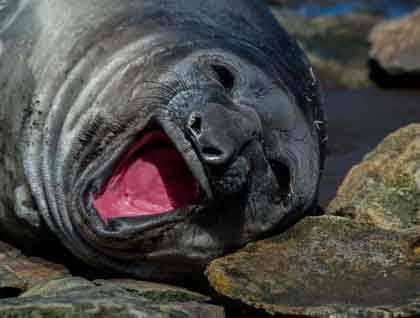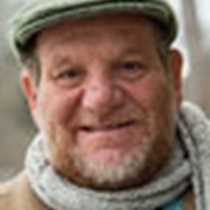With a slightly earlier wake-up call we arose to find that even though there was plenty of sun, because of wind, our plans for the day had to be changed. It was not a big change, we simply had to move our morning plans to the afternoon and our afternoon plans to the morning, a gentle reminder that we are not cruising, we are on an expedition.
We are frequently told that National Geographic Explorer is not just a ship, it is an expedition tool, and as we finished breakfast we saw this firsthand as the captain nosed the ship into the sand just meters from the beach. It was this unusual maneuver that allowed us to make a morning outing as the wind was blowing hard enough that mooring off shore would have prevented us from lowing our Zodiacs and using them to get ashore. Having a captain that knew the shoreline made a very deep drop-off only a few feet from the beach meant all the difference in making our day a success. Now the only thing standing between us and a morning ashore was the line of male fur seals setting up territories all along the length of the beach. The threatening postures of the seals was, however, no match for the postures of the staff and soon the beach masters had cleared a way for us to walk.
Before us lay Stromness, the whaling station where Earnest Shackleton finally reached safety after his historic journey across the Southern Ocean in the lifeboat of his ship Endurance. Back then the whaling station was in full service with the mechanics of processing whales and seals from living animals into oil for lamps and margarine. We could only imagine what a place it was back then. Now only collapsing buildings and the rusting litter of the technology of the era are testament of the slaughter that went on here. More than one of us thought of the irony of how this place, made for rendering the blubber of whales and seals, now has been taken over by so many fur seals, and that a place for the ending of so many lives is now the place where so many new lives begin.
We cannot approach the station any closer than 200 meters, the collapsing buildings and presence of asbestos make it a severe health hazard. Huge propellers lay on the beach rusting with the passage of time, buildings with collapsed roofs, and crumbling walls make you wonder what sort of place this must have been. The surrounding landscape speaks of unbelievable beauty, but the men who lived and worked here suffered many hardships during their time of employment.
In the afternoon, we visited another whaling station, Grytviken. Here also are seals, but it is humans that still influence the island here. One big difference however is that the people working here are working to help the environment rather than destroy it. Grytviken is the home of a wonderful museum run by the South Georgia Heritage Trust, and it is home to the government’s administrative center on King Edward Point. In the evening we were treated to a program given by various members of both organizations and some of the researchers who also work here. Another difference between our two visitation sites of the day is that at Grytviken the building are in good repair, and we were able to walk freely among structures and also visit the grave of the Boss, Earnest Shackleton. A most excellent toast was made by our esteemed naturalist Steve McClean and our shore excursions were finished for the day.






